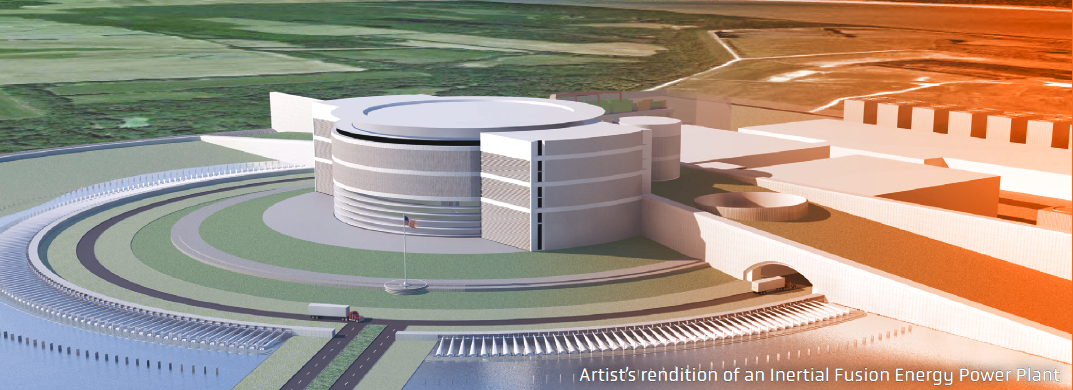Inertial Fusion Energy
Building on the Achievement of Fusion Ignition to Power America

Fusion has the potential to provide a reliable, abundant, safe, and clean energy source. Repeated achievement of fusion ignition at the National Ignition Facility (NIF) as part of the U.S. Department of Energy/National Nuclear Security Administration’s Stockpile Stewardship Program has also established the fundamental scientific feasibility of laser driven inertial confinement fusion as a path toward fusion energy.
To move from successful fusion ignition in laboratory experiments to commercial power plants, significant engineering and technical advances are needed. Stockpile stewardship experiments conducted at NIF, located at Lawrence Livermore National Laboratory, are providing critical data that also helps to establish the technology basis for a viable development path toward laser-powered inertial fusion energy (IFE).
Laser Fusion
A virtually limitless, clean energy source
A laser fusion power plant would look different than NIF. It would use high-power lasers to create continuous fusion ignition reactions from a steady stream of targets containing hydrogen fuel pellets. These pellets, which contain the hydrogen isotopes deuterium and tritium, would be fired into the plant at a rate of about 600 per minute. The plant’s lasers would precisely converge on each target, causing the fuel to ignite and give off more energy than went in. That excess energy could then be converted into a clean, abundant source of electricity when connected to the power grid. Laser fusion power plants would likely be about the size of a small football stadium, and just one could meet most of the electricity needs of a city the size of Washington, D.C.





